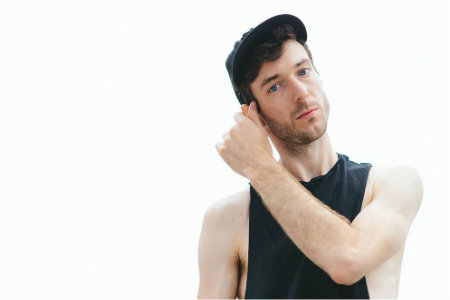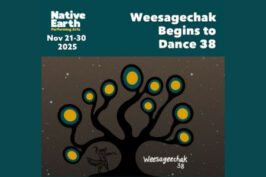Toronto Dance Theatre (TDT) will close their 2018/19 season with the critically acclaimed duet Marienbad, created and performed by TDT Artistic Director Christopher House and writer/theatre-maker/multimedia artist Jordan Tannahill.
I was lucky enough to have Tannahill answer my 5 Questions…
HM: For those unfamiliar with Marienbad, can you share how the initial concept come to be… any specific works that influenced you & Christopher House in creating the piece?
Jordan Tannahill (JT): Christopher and I had the chance to collaborate on a solo together for TDT’s Singular Bodies project back in 2015, in which artists working in fields outside of dance were invited to choreograph solos on members of the company. There was such an obvious creative and personal synergy that the idea was born to work together on a full-length piece.
While developing Marienbad, we drew inspiration from a variety of sources including the paintings of Attila Richard Lukacs, the photography of Slava Mogutin, cruising codes and sex club culture, and the ambiguity of space, time, and persona in Alain Resnai’s film Last Year at Marienbad.

HM: For Marienbad, the bleachers become the performance space, while the audience sits on the stage. Other than having more space for movement, any other reason in switching the set up of the show?
JT: The risers create an incredibly dynamic physical space for our bodies to navigate. It offers us the chance to play with height and distance in rather unique, disarming ways. It also conjures a variety of suggestive landscapes.
HM: Since its premiere in 2016 a lot must have transpired in your life and Christopher’s. Has this lapse of time changed or influenced the choreography in Marienbad?
JT: It’s been fascinating to physically feel the passage of time. To realize that the body I now inhabit is no longer the body I made this piece back in 2016. Certain impulses I had back then no longer feel natural in my body. Without losing any of the intensity of the original, I feel I have been able to find more nuance and detail in the choreographic score.

HM: In this piece, you aim to explore the nuances of intimacy, especially as it exists between men. Can you please expand on how movement/choreography, music/sound, and light help in achieve the themes you and Christopher want to explore?
JT: Marienbad is a piece that alights on possible narratives and relationships between two queer men, but remains perpetually in a state of becoming. So all elements of the choreography and design seek to serve this state of unfolding discovery, from Simon Rossiter’s evocative lighting design, to Matt Smith’s haunting, choral-driven score, in which lyrics remain just on the verge of intelligibility. The choreographic practice is one in which we are hyper-tuned to the presence of one another and the physical space around us. How we respond to sensation and stimulation, on any given night, will change; and so while the score is set, it is also rediscovered in radically new ways each performance.
HM: I understand the piece is physically demanding. How do you prepare for it night after night, physically and mentally?
JT: Yes, the piece takes everything out of me to perform, mentally and physically. It requires us to be in such a heightened state of focus, and puts our bodies through some very gruelling physical tasks. I realize this is probably par for the course for most dancers; I have such tremendous respect for their craft, and the peak condition they have to keep their bodies and minds in. Christopher and I have a physical and mental warm-up regime that helps us tune our awareness to one another and the space around us. We work at seeing and sensing one another through every part of our bodies.
Three years after its world premiere, Marienbad returns to the Winchester Street Theatre, May 23rd to June 1st. Be sure to grab your tickets in advance for this intimate duet. For more information and tickets, please visit tdt.org.






